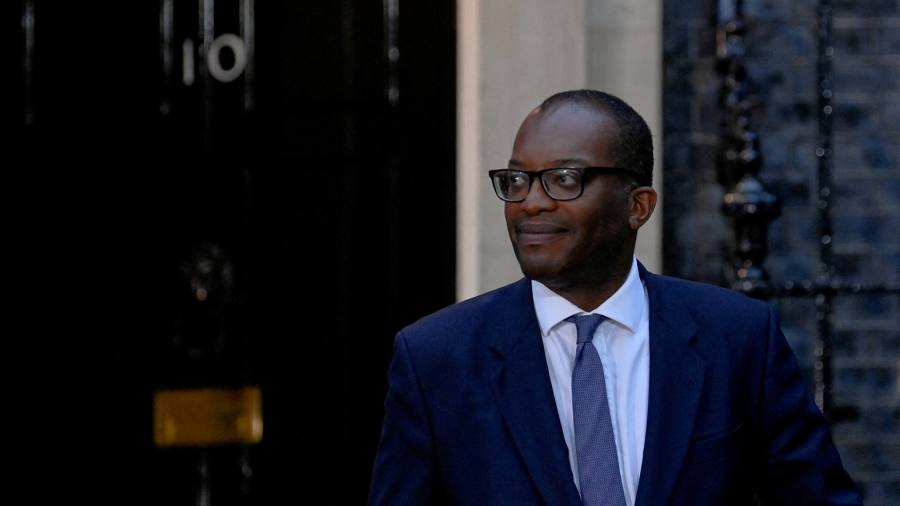Britain’s public finances have given new chancellor Kwasi Kwarteng a difficult backdrop for his mini Budget on Friday, with government borrowing rising to twice the level the independent fiscal watchdog had expected for August.
The public sector borrowed £11.8bn during the month. In May, the Office for Budget Responsibility estimated that the figure would be only £6bn.
With the chancellor set to unveil the costs of the energy support package and large permanent tax cuts on Friday, these figures will underscore market concerns that Liz Truss’s government is taking big risks with the sustainability of the public finances.
The data did not show that a slowdown in economic growth was increasing borrowing, with central government tax receipts of £69.6bn only a little below the OBR’s expectation of £70.5bn.
Instead, public spending was higher than expected. Debt interest payments, linked to higher inflation, were £8.2bn, much higher than the £4.9bn expected, and other public spending also exceeded forecasts.
During her visit to the US on Tuesday, Liz Truss said she wanted to cut taxes further to boost growth, and aides have not denied reports that the government is considering stamp duty reductions on top of cuts to national insurance and a reversal of plans to increase corporate tax rates.
This large loosening of fiscal policy will put the Bank of England on the spot to determine how much it will increase inflationary pressure and how much more quickly it will have to raise interest rates from the current 1.75 per cent. Financial markets expect them to rise above 4 per cent by the summer of next year.


